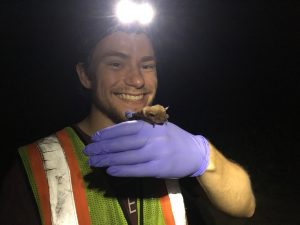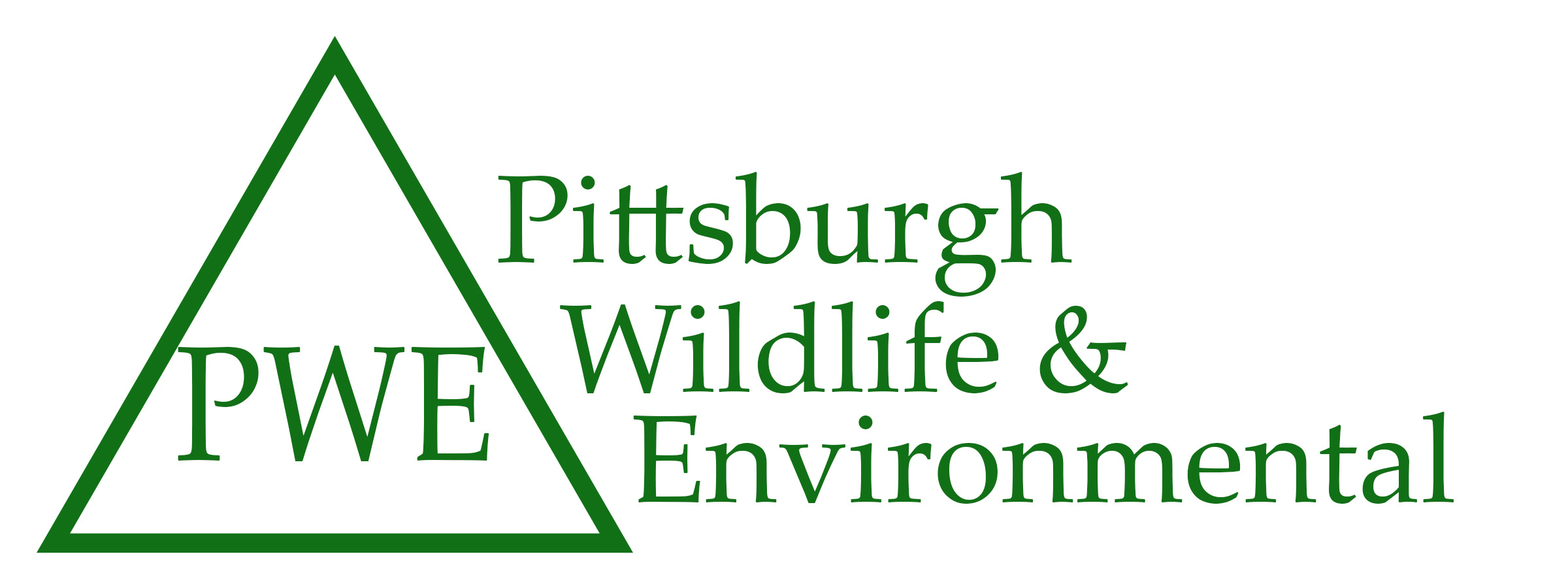Neil Bossart, President

Mr. Bossart is a U.S. Fish and Wildlife Service (USFWS) approved Indiana bat (Myotis sodalis), northern long-eared bat (Myotis septentrionalis), gray bat (Myotis grisescens), and Virginia big-eared bat (Corynorhinus townsendii virginianus) surveyor. His fields of experience and research include the assessment and management of threatened and endangered species, wetlands and streams, forested communities, vernal pools, and freshwater fisheries. He has experience in both Section 7 formal and informal agency consultation along with Section 10 agency consultation. He also helps clients comply with environmental regulations, including the National Environmental Policy Act, the Endangered Species Act, and various state agency and USFWS survey techniques.
Mr. Bossart has completed numerous state and federally endangered and threatened species surveys ranging from aquatic organisms to small mammals for oil/gas wells and pipelines, mineral extraction projects, public transportation projects, timber removal projects, wind farm development, transmission line permitting, and land development projects located in Texas, Tennessee, Kansas, Pennsylvania, West Virginia, Maryland, New York, Ohio, New Mexico, Virginia, and Vermont.
Using aerial and surface based radio telemetry, Mr. Bossart has successfully determined migration routes, critical habitat, foraging territories, and nursery colonies of both state and federally listed species. Mr. Bossart has performed numerous wetland and stream identifications, assessments, and jurisdictional determinations for a variety of clients including private individuals, corporations, and government agencies. He has successfully permitted many United States Army Corps of Engineers (USACE) Section 404/401 Joint Permit Applications, Nationwide permit applications and General permit applications. Additionally, he has prepared numerous wetland and stream mitigation plans and planting plans as well as overseen the construction and monitoring of the mitigation areas.
Genavie Oliveria, Project Scientist

Mrs. Oliveria is a USFWS approved Indiana bat, northern long-eared bat, gray bat, and Virginia big-eared bat surveyor. She has completed numerous presence/probable absence surveys and fall swarm surveys. She has worked on large scale projects for the oil/gas industry, transmission line permitting, mineral extraction projects, and wind farm development in Pennsylvania, Ohio, West Virginia, Virginia, Kentucky, New York, and Illinois. She has a bachelor’s degree in Wildlife Science from The Pennsylvania State University.
Mrs. Oliveria specializes in presence/absence surveys for the Indiana bat and northern long-eared bat. She has completed multiple mist-net sites and fall portal surveys throughout the Northeast, Midwest, and Southeast. She has handled over 2,000 Vespertilionidae including the Indiana bat, northern long-eared bat, and gray bat. Mrs. Oliveria has completed bat surveys using various methodologies including: mist-nets, harp traps, and acoustic detectors. The surveys were completed to determine presence/absence of threatened and endangered bat species, hibernacula suitability and occupancy, emergence/dispersal from roosting sites, and habitat suitability. Additional field activities included the following: identifying, measuring, weighing, photo documenting, banding, affixing radio transmitters to captured bats, tracking of transmitter equipped bats, and identifying bats to species.
Mrs. Oliveria has performed over 300 hours of surface based radio telemetry to successfully determine critical habitat and foraging territories of rare bat species. Mrs. Oliveria has completed numerous Indiana bat roosting and foraging habitat assessments as well as emergence surveys for USFWS concurrence. She has also performed wetland and stream identifications, assessments, and delineations for a variety of clients including private individuals, corporations, and government agencies.
Mrs. Oliveria has assisted with a multitude of environmental studies from water quality sample collection to macroinvertebrate surveys. Mrs. Oliveria has completed a 38 hour USACE wetland delineation training program and has assisted with and performed numerous wetland and stream identifications, delineations, and resource assessments. Other duties for Mrs. Oliveria include collection of sub-meter GPS data, assembling field data, GPS data, writing technical reports, submittal of agency consultation letters and project review letters, and assisting with the preparation of 404/401 permit applications.
Ethan Okon, Project Scientist

Mr. Okon is a USFWS approved Indiana bat, northern long-eared bat, gray bat, and Virginia big-eared bat surveyor. He has completed numerous presence/probable absence mist net surveys and fall swarm surveys. He has worked on large scale projects for oil/gas pipelines, transmission line permitting, solar energy facilities, and mineral extraction projects in Illinois, Indiana, Iowa, Kentucky, New Jersey, New York, Ohio, Pennsylvania, Virginia, and West Virginia. He has a bachelor’s degree in Wildlife Science from The Pennsylvania State University.
Mr. Okon specializes in presence/absence surveys for the Indiana bat and northern long-eared bat. He has completed multiple mist-net sites and fall portal surveys throughout the Northeast, Midwest, and Southeast. He has handled and identified over 1,500 Vespertilionidae including the Indiana bat, northern long-eared bat, gray bat, and Virginia big-eared bat. Mr. Okon has completed bat surveys using various methodologies including: mist-nets, harp traps, and acoustic detectors. The surveys were completed to determine presence/absence of threatened and endangered bat species, hibernacula suitability and occupancy, emergence/dispersal from roosting sites, and habitat suitability. Additional field activities included the following: identifying, measuring, weighing, photo documenting, banding, affixing radio transmitters to captured bats, tracking of transmitter equipped bats, and identifying bats to species.
Mr. Okon has completed over 375 hours of surface based radio telemetry to successfully determine critical habitat and foraging territories of threatened and endangered bat species. Mr. Okon has assisted with and completed many Indiana bat habitat assessments, portal searches, and acoustic surveys for USFWS concurrence.
Mr. Okon has completed a 38 hour USACE wetland delineation training program and has assisted in numerous wetland and stream identifications, delineations, and resource assessments. Mr. Okon also completed a two day Appalachian Crayfishes Identification Workshop for threatened and endangered species and passed the accompanying identification exam. Other duties for Mr. Okon include collection of sub-meter GPS data, assembling field data, writing technical reports, submittal of agency consultation letters and project review letters, and assisting with the preparation of 404/401 permit applications. He is also in charge of vehicle and gear maintenance.
Zachary Shutty, Staff Scientist
 Mr. Shutty is a USFWS approved Indiana bat, northern long-eared bat, gray bat, and Virginia big-eared bat surveyor. He has worked on large scale projects for the oil/gas pipelines, transmission line permitting, solar energy facilities, and mineral extraction projects in Illinois, Indiana, Kentucky, New Jersey, Ohio, Pennsylvania, Virginia, and West Virginia. He has a bachelor’s degree in Wildlife Biology and Environmental Science from Edinboro University.
Mr. Shutty is a USFWS approved Indiana bat, northern long-eared bat, gray bat, and Virginia big-eared bat surveyor. He has worked on large scale projects for the oil/gas pipelines, transmission line permitting, solar energy facilities, and mineral extraction projects in Illinois, Indiana, Kentucky, New Jersey, Ohio, Pennsylvania, Virginia, and West Virginia. He has a bachelor’s degree in Wildlife Biology and Environmental Science from Edinboro University.
Mr. Shutty has completed bat surveys using various methodologies including mist-nets, harp traps, surface-based radio telemetry, and acoustic detectors. The surveys were completed to determine presence/absence of threatened and endangered bat species, hibernacula suitability and occupancy, emergence/dispersal from roosting sites, and habitat suitability. Additional field activities included the following: identifying, measuring, weighing, photo documenting, banding, affixing radio transmitters to captured bats, tracking of transmitter equipped bats, and identifying bats to species.
Mr. Okon has completed a 38 hour USACE wetland delineation training program and has assisted in numerous wetland and stream identifications, delineations, and resource assessments. Mr. Shutty also has three years of experience working directly for the USACE as a natural resource ranger. During this time, he enforced the rules and regulations of the USACE, created and presented educational signage and displays, conducted interpretive tours, managed native and invasive flora and fauna, and assisted in monitoring piping plover and Least Tern populations on sandbars and shorelines.
Jennifer Dreibelbis, Staff Scientist

Ms. Dreibelbis is a USFWS approved Indiana bat and northern long-eared bat surveyor and has completed multiple presence/probable absence survey projects for the oil and gas industries, mineral extraction projects, wind farm development, transmission line permitting, and land development projects located in Pennsylvania, West Virginia, Ohio, Indiana, New York, and Illinois. She has a bachelor’s degree in Wildlife and Fisheries Science and Forestry from The Pennsylvania State University.
Ms. Dreibelbis specializes in presence/absence surveys for the Indiana bat and northern long-eared bat. She has completed numerous mist-net sites and fall portal surveys throughout the Northeast, Midwest, and Southeast. She has handled and identified over 2,100 Vespertilionidae including the Indiana bat and Northern Long-eared bat. Ms. Dreibelbis has completed bat surveys using various methodologies including: mist-nets, harp-traps, and acoustic detectors. The surveys were completed to determine presence/absence, species diversity, hibernacula usage, emergence/dispersal, and habitat usage. Additional field activities included the following: banding, measuring, weighing, transmitter attachment, photo documentation, tracking of transmitter equipped bats, and identifying bats to species.
Ms. Dreibelbis has used surface based radio telemetry to successfully determine critical habitat, daytime roost use, foraging territories, and nursery colonies of federally endangered bat species. Additionally, she has entered and analyzed foraging data using LOAS and Biotas to determine critical foraging habitat for state threatened and endangered bat species. She has also participated in habitat evaluations for both sensitive and non-sensitive species.
Ms. Dreibelbis has performed stream and wetland identification, assessments, and delineations for private individuals, corporations, and government agencies. Ms. Dreibelbis also has five years of experience working for an environmental forensics laboratory as an assistant engineer scientist. During these five years, she was active both in the lab, and in the field. In both settings, she was responsible for sample collection, preparation, analysis, data interpretation, client communications, project management, and report writing.

